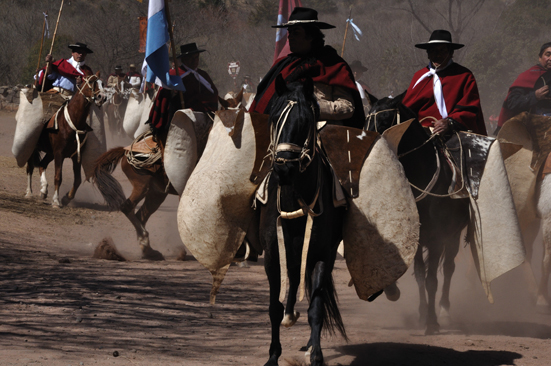
We are in the Province of Salta, North West Argentina, at the exact spot where started the Independence movement In Southern America, 200 years ago; in the Estancia from where the general Arenales left to liberate the Andes from his Spanish fellow citizen.
“ The Angel of victory is guiding my banner : follow his route towards independence and glory… go for Arenales : who flies from victory to victory, so that my army can secure on the battle field, the complete emancipation of the INCA SOIL.”
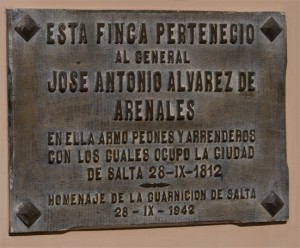
1812. This is how General San Martin, the founding father of Argentina, fine communicator as usual, adresses to the Calchaquis Diaguitas native Indians to introduce them his armoured arm, who is about to take over the banner left by the glorious Güemes, dying on the battlefield.
Salta is taken; the path of the Andes is now open.
To get rid of the Spagnards from the Old Continent, San Martin invents the White Inca : General Juan Antonio Álvarez de Arenales ;
He will serve just for this duty, as for the Inca, the world will quickly get rid of him, once his mission accomplished.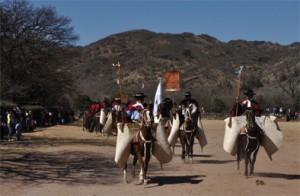
What the great San Martin didn’t realize, is that his words have created a myth much more crucial to Argentina’s soul : as the White Inca poped out of his hat, he launched the myth of the Gaucho, which is haunting South America’s poet and litterature since then, like Edgar A Poe’s raven.
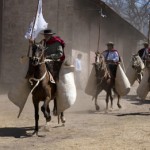 In the beginning, a Gaucho, is the indian who responded to the call of San Martin. Gaucho comes from Huachu, in Quechua, the language of the Andes, it means orphan. The one who has no family to take care of and who can sacrifice himself to “the complete emancipation of the INCA SOIL”.
In the beginning, a Gaucho, is the indian who responded to the call of San Martin. Gaucho comes from Huachu, in Quechua, the language of the Andes, it means orphan. The one who has no family to take care of and who can sacrifice himself to “the complete emancipation of the INCA SOIL”.
This day, an army rose from the mountains, moving towards the hope of a society where Indians would have the same rights as the whites. This is how Argentina’s Independance has been “sold” to the natives. This what the gauchos went for fighting for the Caciques who wanted to replace the former Spanish Caciques.
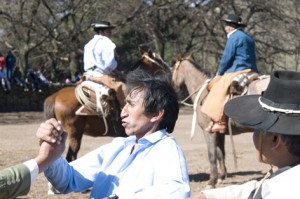 The gaucho, is bound to be the orphan of Liberty. Not a professional soldier, nor a man of arms at all, the man reveals himself on the edge of the apocalypse, ready to achieve any act of prowess to give his soul to justice. Then gently, goes back in the rank, to take care of his kin and cattle.
The gaucho, is bound to be the orphan of Liberty. Not a professional soldier, nor a man of arms at all, the man reveals himself on the edge of the apocalypse, ready to achieve any act of prowess to give his soul to justice. Then gently, goes back in the rank, to take care of his kin and cattle.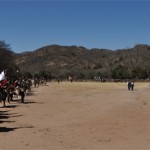
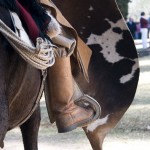
But if he has nobody to take care of, he will flee from his heart, his ungratefull mountains and stray in the immense Pampa, at the measure of his melancoly, his vanished expectations, his blues; in mother nature, his cursed sister.
The Nahual is the animal side of the native indian, the side which brings the gaucho Pablo out of himself, alone with his knife to slay down a 2,5m long cougar (head to tail); because it was eating his poultry, he became a jaguar.
Today it is Fiesta time. It is Santa Rosa de Lima, the patronness of the Army of Liberation, the Saint of the Estancia of the White Inca ; They all appeared from the mountains in their best costumes, shining new on their best peruvian horses, with their proud cedence march, to dismlay high up the colours of liberty.
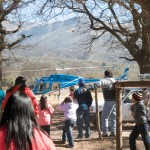 Today the true Gaucho’s spirit revives :
Today the true Gaucho’s spirit revives : 
200 years after the White Inca, the governor of the Province of Salta steps down of his helicopter to pay them an homage.
To pray with them.

For him, they killed two bulls, they put on fire during the whole week the village hoven big as a house, and prepared the Asado and the Guisado.
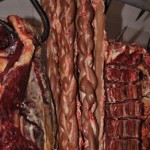
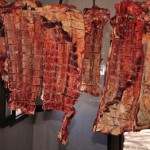
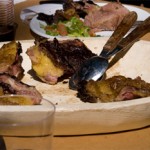
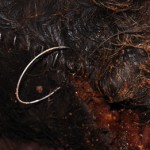
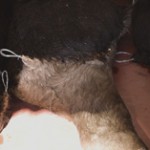
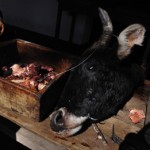
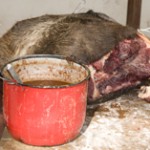
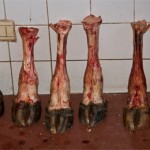
Here, to carve flesh, is “savoir vivre”. Eating is to kill. No detour, no shame in front of death.
The Guisado : all the tender bits of the animal are marinated in oil, vinegar, herbs, garlic and chillies; sown back in the beast to be roasted in the hoven for 12 hours..
The Asado : ribs and trips are prepared, hoofs packed, heart embroched, Bife de Chorizo, sirloin, everything goes to the BBQ on agonizing ashes, at the verge of extinction to cook for a slow and penetrating heat.
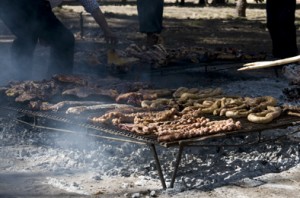
Each bit of meat, each bite of this banquet for a 1000 guests, we bite history, we chew a ritual, it is magic we are eating. The bull has been sacrified and shared as the ancestors used to. Wine, aguardiente and Ferney Branca is flooding.

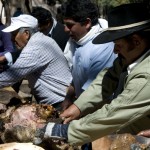 The best day of the year. The discreet gaucho talks, smiles, slightly unveils his character ; but the woman? she stays at distance and marking respect.
The best day of the year. The discreet gaucho talks, smiles, slightly unveils his character ; but the woman? she stays at distance and marking respect. 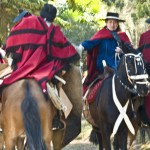 They are not at all what you call the staff canteen of the regiment. Very few women are gaucho and the more often they are the true leader of the gang; They wear the long skirt as real amazons : they are called the chinitas, the little chinese girls, becaus of the long days spent in the cattle’s dust which have slanted the eyes of her craggy indian face for ever.
They are not at all what you call the staff canteen of the regiment. Very few women are gaucho and the more often they are the true leader of the gang; They wear the long skirt as real amazons : they are called the chinitas, the little chinese girls, becaus of the long days spent in the cattle’s dust which have slanted the eyes of her craggy indian face for ever. 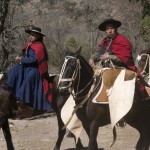
Aguardiente, Ferney, Wine, We are here to praise the ancestors. Masters of the World, lassos are flying, bulls are caught and blocked, so and so, in fact it is far less precise than on a regular working day in the corral. The horses got it all : it is now leading and taking care of everything. Men are all absorbed in theeuphoria of their myth and the bull is jubilating. Like the Texan cowboy myth and his rodeo? Nothing to do with.
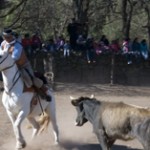
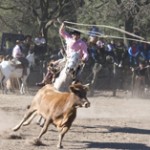
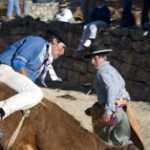
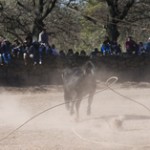
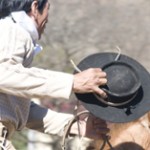
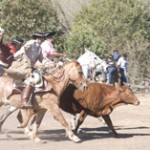
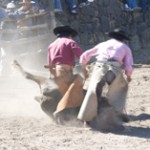
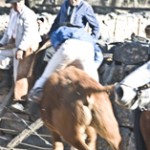
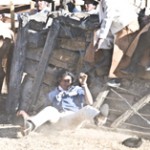
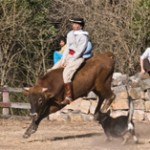
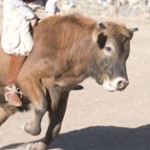
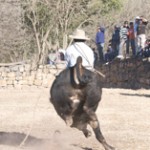
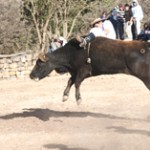
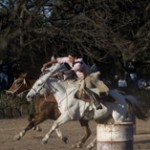
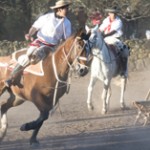
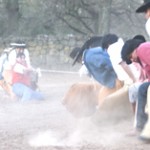
The gaucho, according to a writer from Argentina, is a myth similar to Faust, the Divine Comedy, a local Don Quichotte : Martin Fierro. Quite a name! Proud as the blade of San Martin ! To create his popular character popular, Jose Hernandez the famous writer, admired by the creme de la creme of the XIXth century litterature… turned him into a white man protecting the poor and the orfan from the evil black man. I slightly caricature, but it sales better. John Wayne as a Sioux doesn’t fit very well. Here a black means an Indian. According to the Argentinian imagery, very often it is better considered to be an Afro American, than an Indian. Here dignity has its’ scale, that an Indian could not climb. Hopefully things are changing.
Martin Fierro, this is how the young Jorge Luis Borges, the absolute icone of the Argentina’s blues, named his first gang… of dedicated poetry. The gaucho is for him the ultimate resource for the soul of South America. According to Borges and his friends, it must be part of the spirit of the young continent, in order to emancipate itself from the distant Europe, constant and tedious reference as his compatriots’ everyday reference. A need of space and fresh air.
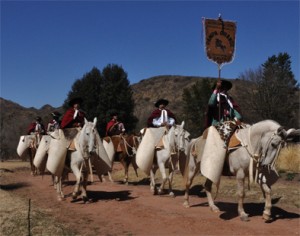
But Borges remained a son of Ulysses and the gaucho a son of the Inca. They ignore each other. It is the drama of a continent. Although, along all the roads in Argentina, at the smallest track in the desert, there are little altars always under a caroub tree, dedicated to Gauchito Gil, the Robin Hood of the cactus. Nobody mentions it. It belongs to poor people’s culture. Any humble person exchanges with him a libation for a miracle. The Saint Gaucho will never be officially recognized.
Always a caroub tree. The tree which fertilizes the soil. Once more the Gaucho is full of resources. He shows the way; let us hear the Indian hushed up in our innermost thoughts.
By neglecting him, we are oblivious of so many things. We tend to use always the same methods without asking ourselves if it is realy adapted to the place. Stop. Lets bring back a little imagination. In 10 years Argentina has flouded its land with transgenic soy, without a single moment thinking of what and who was the victim of this sacrifice. This year unemployed Gauchos are protesting on the roads of Argentina. Halt. It doesn’t make sense. Lets’ open our eyes. At the eve of the Bicentenial of the creation of Argentina, lets’ change, lets’ listen to the indian, as we have a lot to gain from this exchange of ideas.
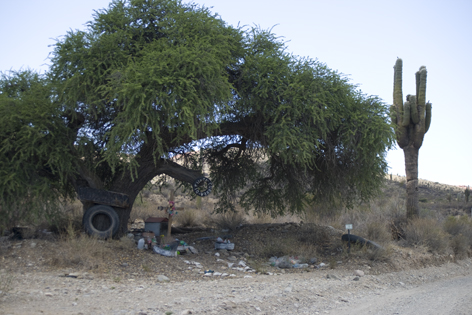











































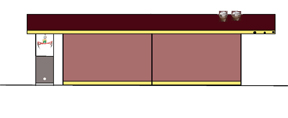
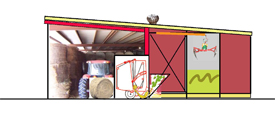
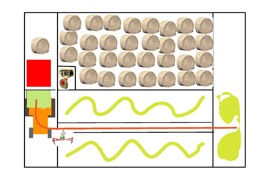
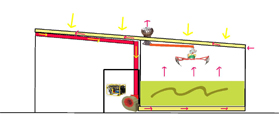
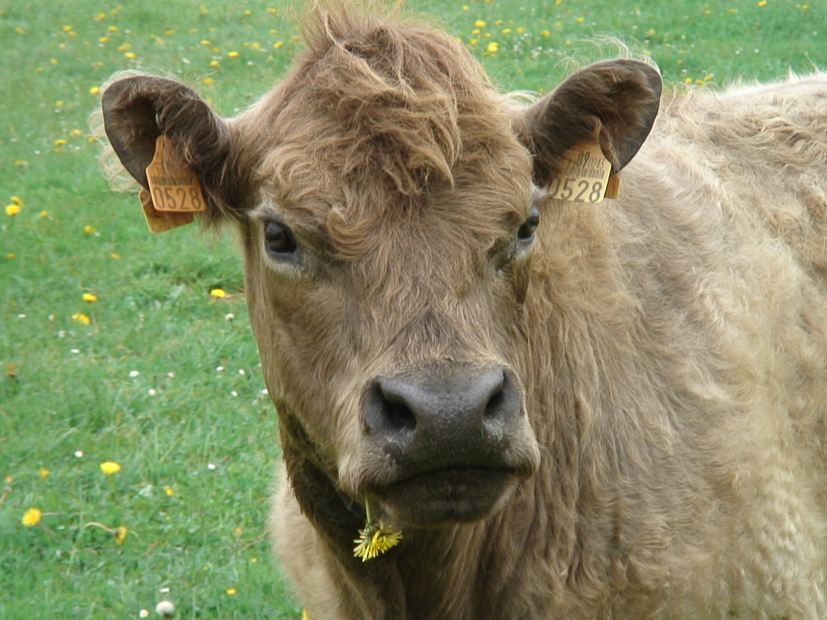 Most of cows’ illnesses come from their food. It is the biodiversity of what they eat that build their Immunitary defenses; beware excesses, they can destoy these defenses in a glimpse.
Most of cows’ illnesses come from their food. It is the biodiversity of what they eat that build their Immunitary defenses; beware excesses, they can destoy these defenses in a glimpse.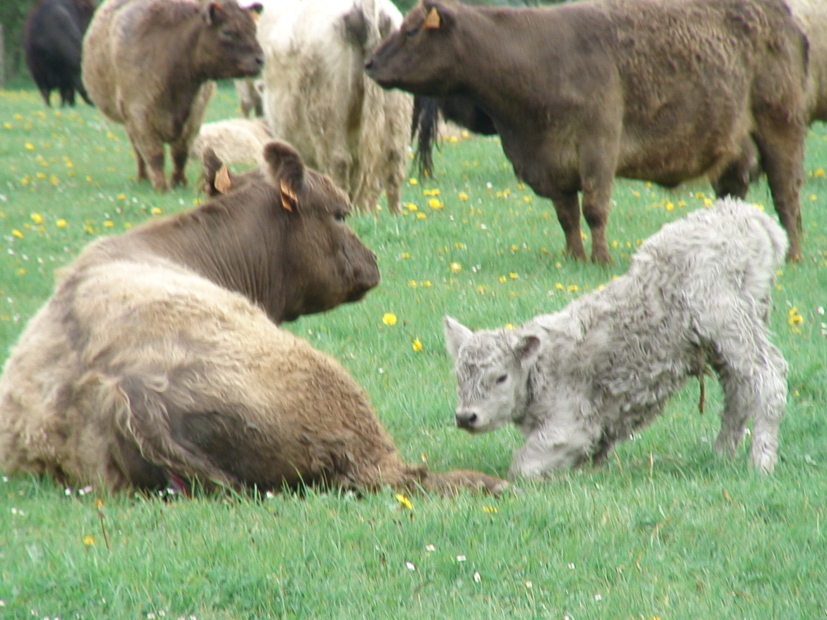
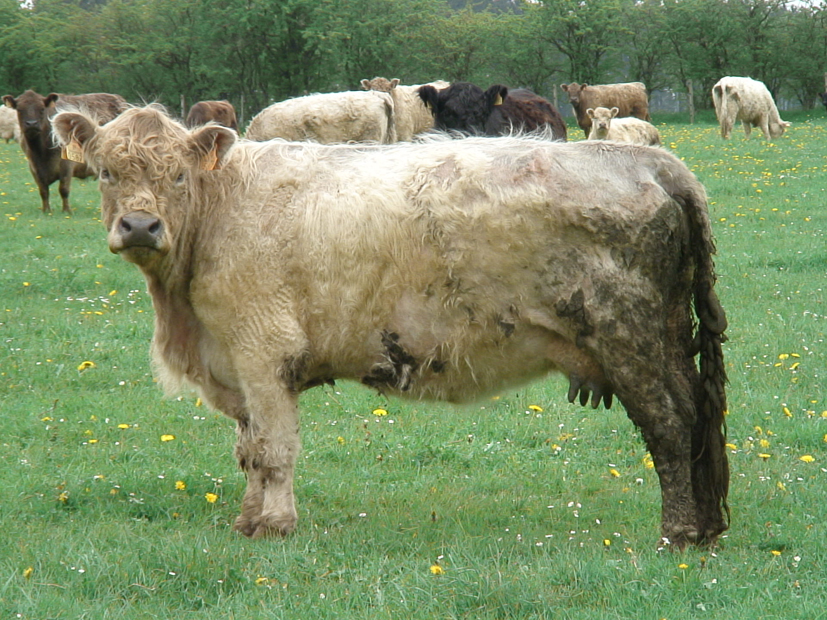
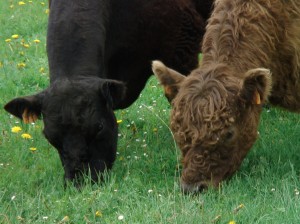
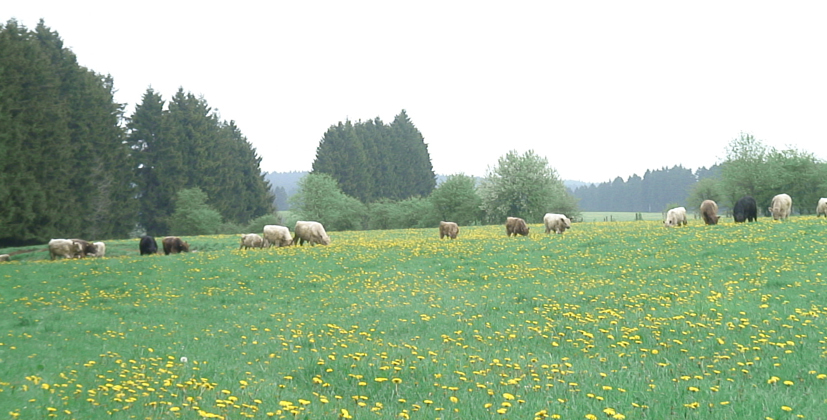

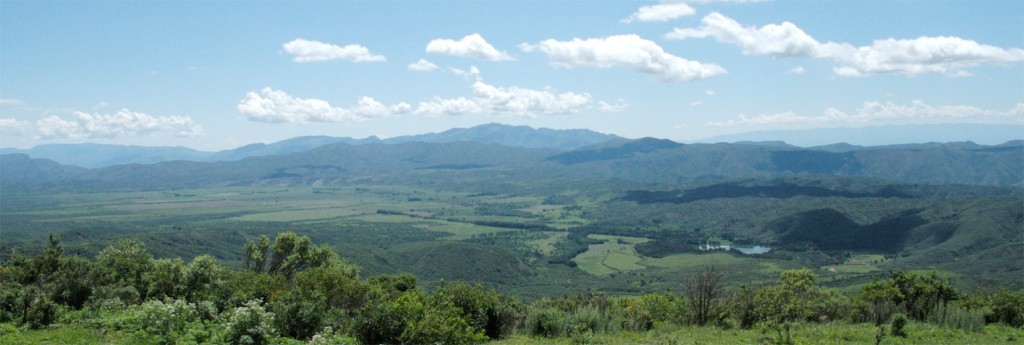
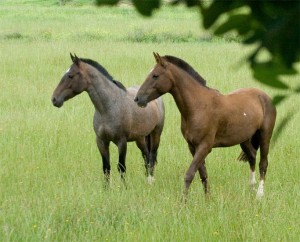 ; dont forget that the primary biotope of horses is wood.
; dont forget that the primary biotope of horses is wood.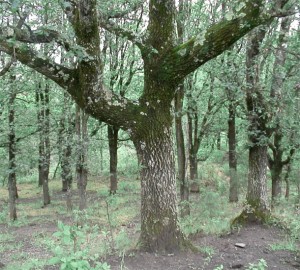 If you have an old forest close by, you will link it with your young trees by a path of wood chips which will make a web between all the trees, which will make the mycelium run.
If you have an old forest close by, you will link it with your young trees by a path of wood chips which will make a web between all the trees, which will make the mycelium run.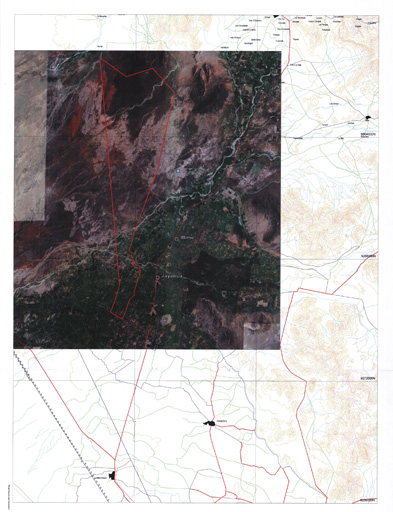 Here is the 30 000acres domain on the surface satelite image.
Here is the 30 000acres domain on the surface satelite image.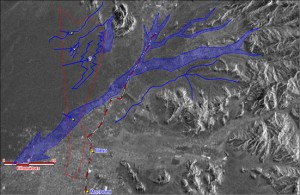
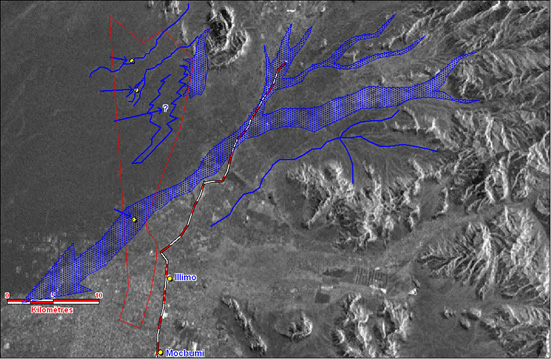
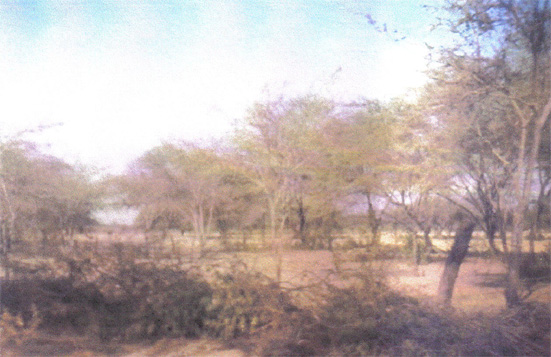 Deeper, we go minus 30m meters underground.
Deeper, we go minus 30m meters underground.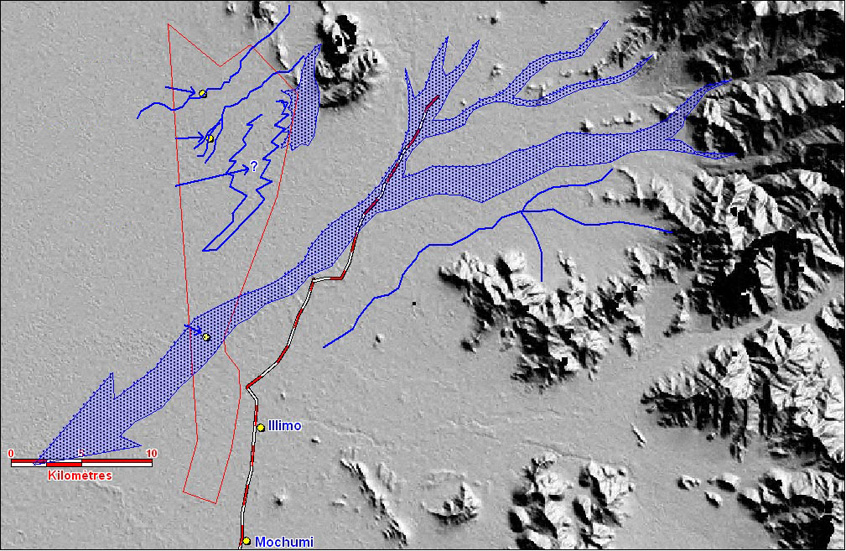
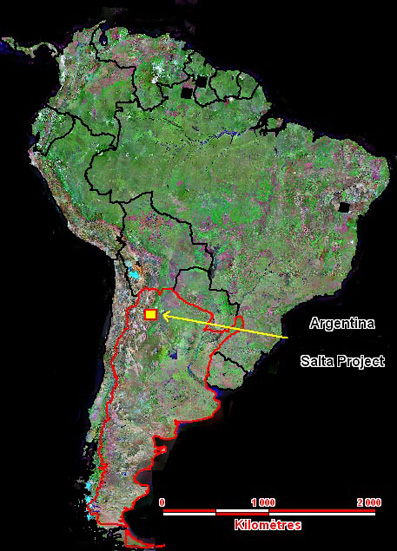 The dark squares are apparently sites that the army doies not want us to see. Lets get closer to where we work :
The dark squares are apparently sites that the army doies not want us to see. Lets get closer to where we work :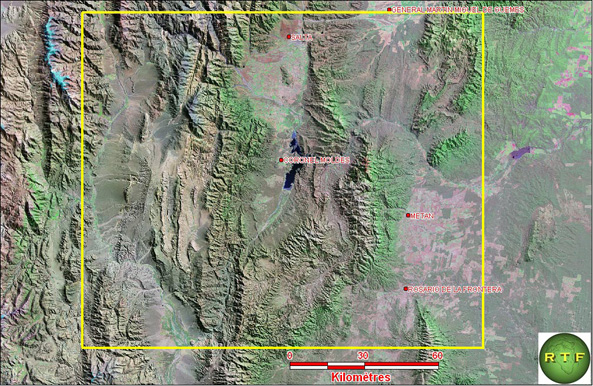 Closer. Her we have targeted a little to high; we arrive just in the lake where goes all the water of the estancia we are advising.
Closer. Her we have targeted a little to high; we arrive just in the lake where goes all the water of the estancia we are advising.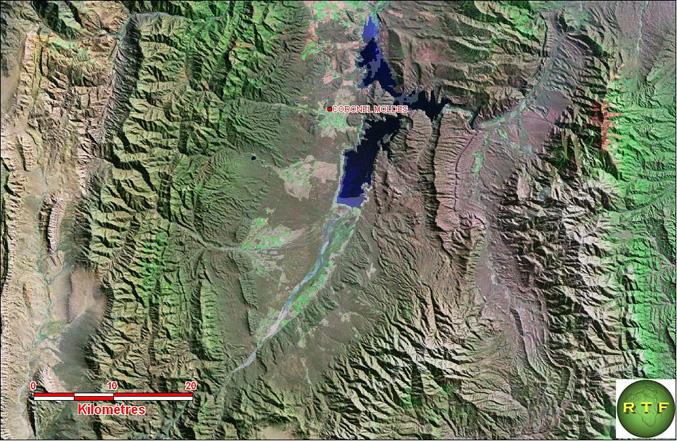 Lets get closer and play with the image so that we can understand the geological process, teh different rocks and the impact of water on the spot. First an image to get a global view on the whole region.
Lets get closer and play with the image so that we can understand the geological process, teh different rocks and the impact of water on the spot. First an image to get a global view on the whole region.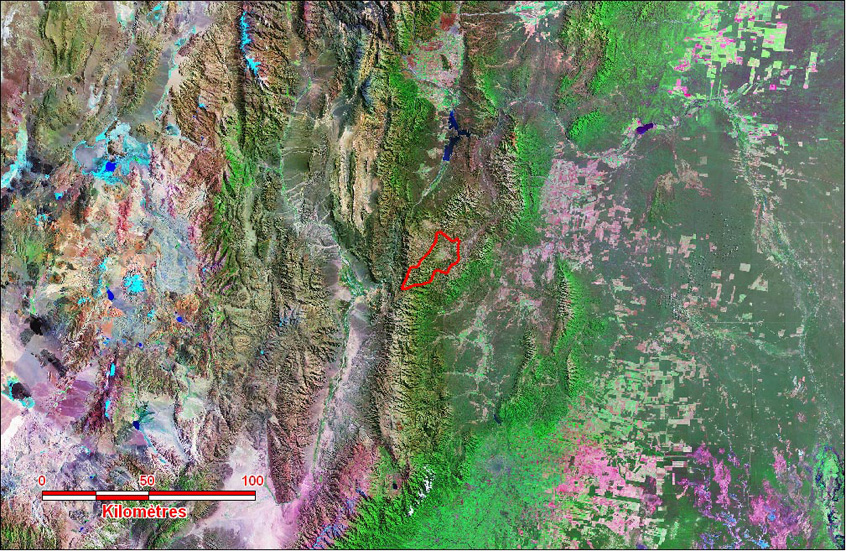 This image shows the climat impact on the domain.
This image shows the climat impact on the domain.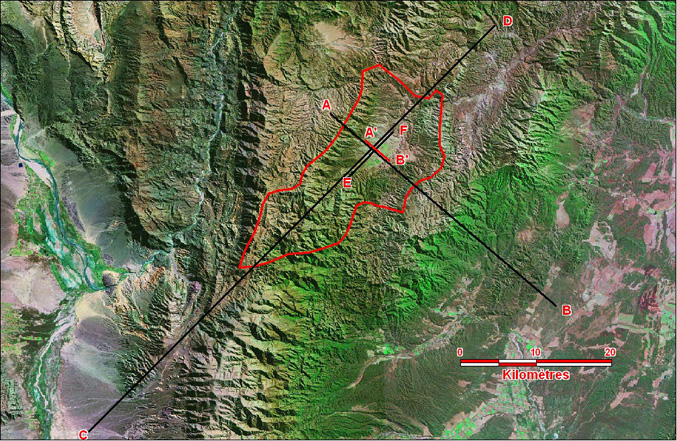 This land is dreadfully less green than it should be. Far less than the spaces untouched by man. What has happened?
This land is dreadfully less green than it should be. Far less than the spaces untouched by man. What has happened?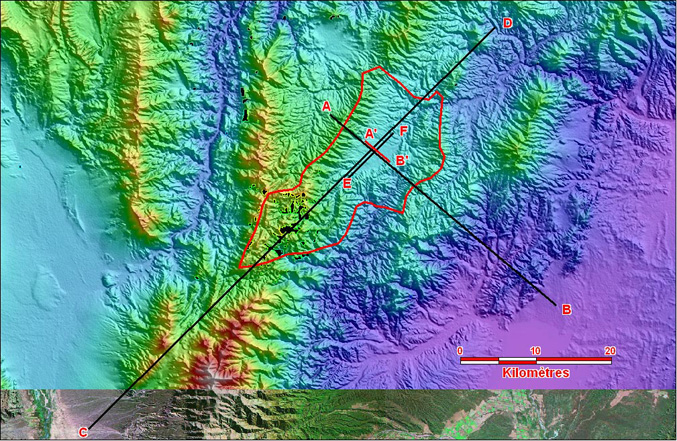 Toute l’eau du domaine se dirige vers B’ et l’on dirait que rien ne pousse là.
Toute l’eau du domaine se dirige vers B’ et l’on dirait que rien ne pousse là.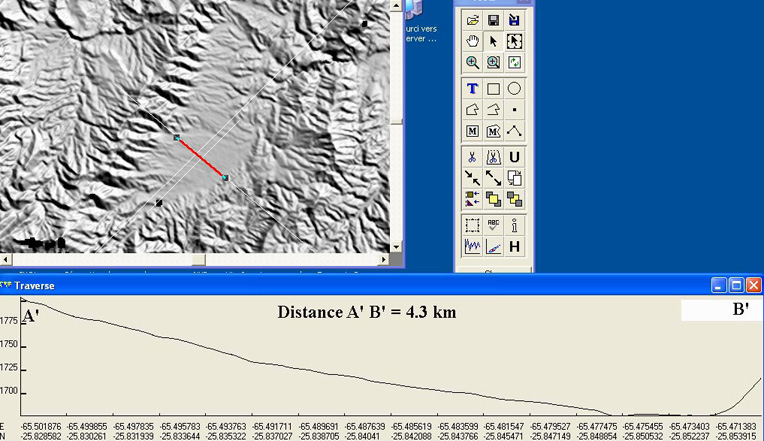 The whole land is in total erosion. We have here alluvions which are all taken aay by the river: look at the cross sections to better understand the process :
The whole land is in total erosion. We have here alluvions which are all taken aay by the river: look at the cross sections to better understand the process : What on the ground seems flat is absolutly not in reality. Giving the fragile composition of the soil, at long term everything can collapse to become a canyon. We must protect the sites which already shows sign of transformation in canyon. Avoid all kind of treading by the cattle in some area. lets get closer:
What on the ground seems flat is absolutly not in reality. Giving the fragile composition of the soil, at long term everything can collapse to become a canyon. We must protect the sites which already shows sign of transformation in canyon. Avoid all kind of treading by the cattle in some area. lets get closer: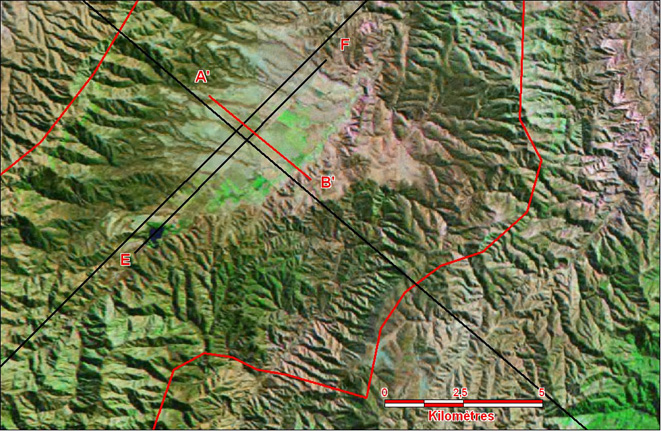
 If we do not act, everything is going to collapse gently. We must avoid all kind of chemicals, forbid glyfosate, stop weeding. In order to prevent erosion we must count on any plant possible to retain the soil.
If we do not act, everything is going to collapse gently. We must avoid all kind of chemicals, forbid glyfosate, stop weeding. In order to prevent erosion we must count on any plant possible to retain the soil.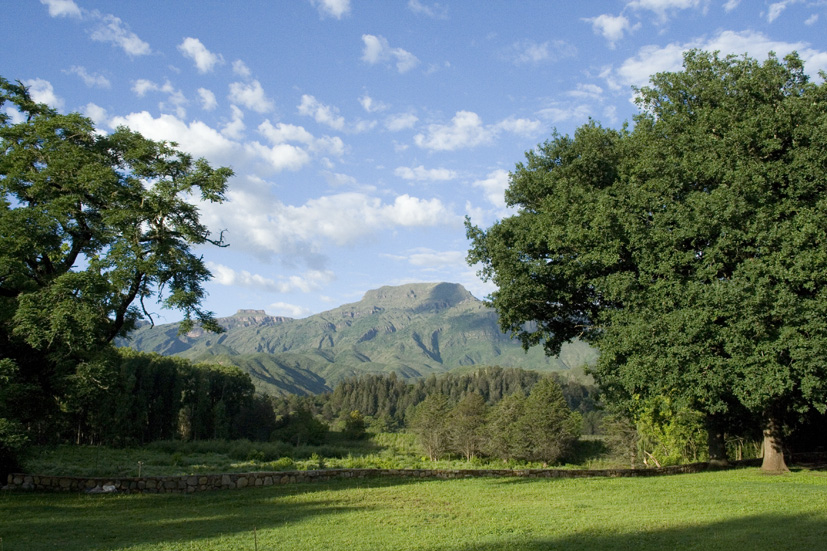
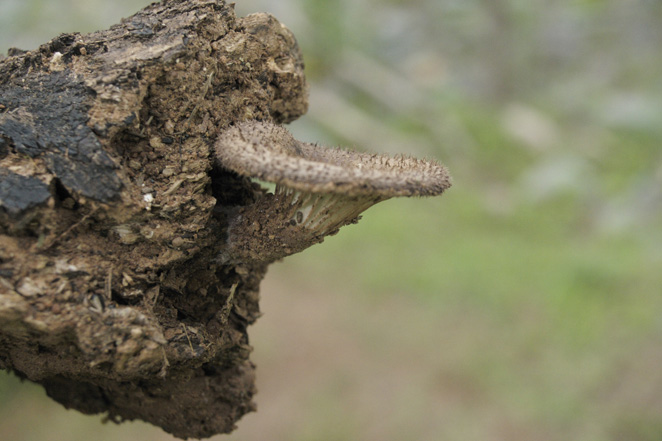
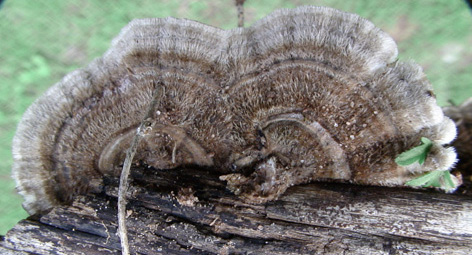
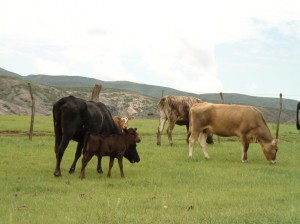 “My dear man, when I was making my cheese, my cows were producing 3000 litres of milk per year; now they are producing ten times more… the grass is still the same… Sorry such a cheese is impossible to make again.”
“My dear man, when I was making my cheese, my cows were producing 3000 litres of milk per year; now they are producing ten times more… the grass is still the same… Sorry such a cheese is impossible to make again.”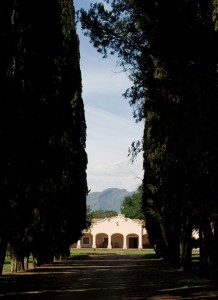
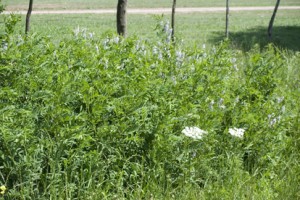
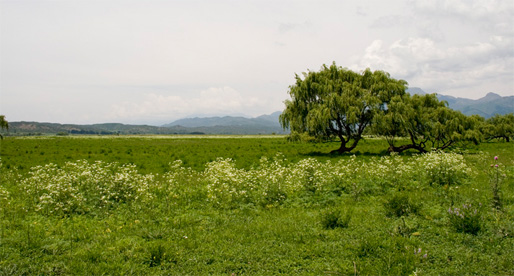
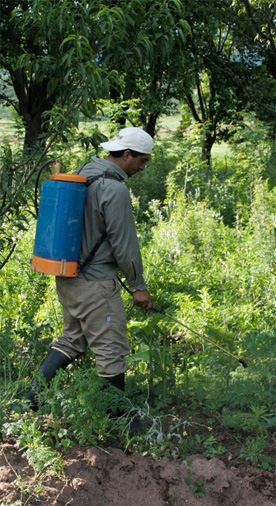
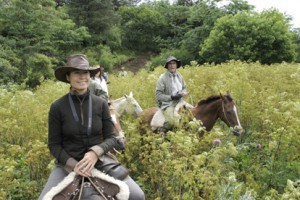
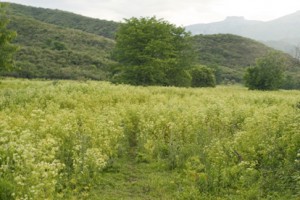 the horses pass through this field of 2meters high hemlock, hears backwards, with the worse feeling ever.
the horses pass through this field of 2meters high hemlock, hears backwards, with the worse feeling ever.
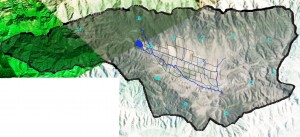
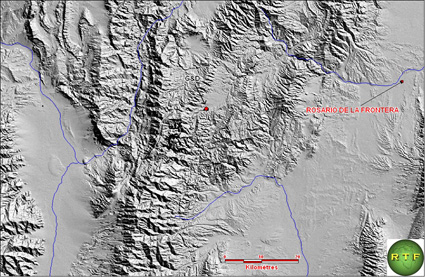

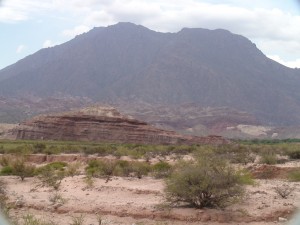 See the mountain in the back of the panoramic photo? This is what the other side of the mountain looks like.
See the mountain in the back of the panoramic photo? This is what the other side of the mountain looks like.